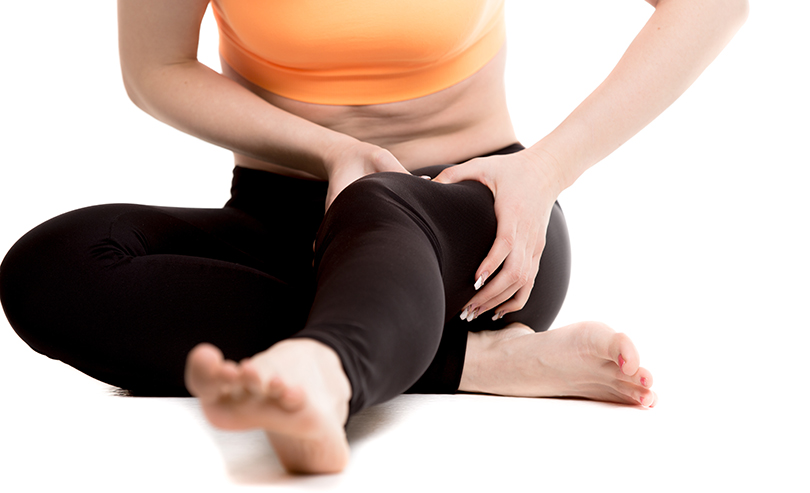What to Know About Massage Therapy for Fibromyalgia
Some people only need to hear the word “massage” and they melt. It feels good and eases your body pain when a massage therapist tackles your pain points. For those with fibromyalgia, massage therapy may be the symptom reliever you are looking for. Let’s take a look at what massage therapy for fibromyalgia can do.
An Overview of Fibromyalgia
Fibromyalgia is a disorder defined by its chronic pain that seems to come and go without an agenda. Researchers suspect that the painful sensations are heightened due to how the brain processes pain signals; this is due to an increase in certain brain chemicals. Fibromyalgia symptoms include widespread pain in the muscles, tendons, ligaments and other soft tissues. Other symptoms include anxiety, depression, difficulty sleeping and trouble with mental tasks. There currently is not a cure for fibromyalgia, but massage therapy can help manage the pain.
What Is Massage Therapy?
Massage therapy is a long-standing method for healthcare. A massage therapist moves your body’s muscles and soft tissues to help with pain or tightness. They use kneading or rubbing techniques to relieve fibromyalgia pain in the joints, muscles, tendons and ligaments. Depending on the needs and severity of a person’s fibromyalgia, the massage pressure may range from deep pressure to light stroking.
How Massage Therapy Treats Fibromyalgia
Massage therapy is not a cure for fibromyalgia, but it can ease discomfort. When a person is in chronic pain, they need help to manage their symptoms. Massage therapy can help relax the muscles, improve the range of motion in the joints and increase the body’s production of its natural painkillers. Additional perks of massage therapy include blood flow stimulation, elimination of metabolic waste and lengthening of muscle fibers.
There are different types of massage that are used to loosen tight muscles and increase mobility in the body using a variety of techniques. The combination of massage that seems to work best includes kneading, stretching, pressure and heat.
Pros of Massage Therapy for Fibromyalgia
There are plenty of reasons to get massage therapy if you have fibromyalgia:
- Reduced pain and tender points. Regular sessions can help reduce chronic pain associated with fibromyalgia.
- Increased amount and quality of sleep. Getting an evening massage is shown to improve quality of sleep. Sleeping hours are when your body repairs and rejuvenates itself—more hours and better sleep enables your body to take care of itself more effectively.
- Improved muscle tone. Massage helps revitalize tired muscles and clear out toxins that are trapped within the muscles by improving circulation.
- Improved mental state. Massage relaxes the body and mind, which can relieve mental stress and help resolve some cognitive issues.
- Lowered effects of anxiety or depression. Massage helps restore homeostasis of the body, which helps balance out hormone fluctuations, appetite changes and it can prevent you from operating in fight-or-flight mode.
- Headache relief. Improved circulation can take away the physical source of a headache.
Going out with fibromyalgia can seem like an impossible task some days but here are some tips and tricks to make it a bit easier.
Cons of Massage Therapy for Fibromyalgia
- Lasting relief is not guaranteed. You need to keep coming back for additional sessions.
- Treatment requires trial and error. One major symptom of fibromyalgia is sensitivity to touch. Your tender muscles will definitely feel it. There may be some painful moments as your therapist finds the right combination of massage type and pressure for you. Flare-ups also happen, so your massage therapist may need to change their approach for every visit.
- It may be expensive. Unless you have an insurance plan that covers massage therapy, you will need to pay out-of-pocket for each visit.
- You need to talk about your fibromyalgia. You do not have the luxury to merely go for a massage; you need to let your therapist know about your fibromyalgia so they can adopt their approach.
- Your muscles need recovery time. Take it easy after your massage because your muscles usually have a delayed response and the time will help them recover.
Does Massage Therapy Work for Fibromyalgia?
The short answer is that massage therapy helps somewhat. It’s not a cure by any means, but research shows that myofascial release can help reduce pain and stiffness, depression, fatigue, stress and anxiety. Massage therapy is generally a part of the solution to control pain levels, but usually is part of treatment rather than the sole treatment.
Types of Massage Therapies Used for Fibromyalgia
Massage is beneficial for fibromyalgia patients because the myofascial release massage helps relax contracted muscles and improve blood flow. Depending on which technique is beneficial for you, you may actively provide resistance or stay relaxed through the massage. Types of massage that may help:
- Connective tissue massage: uses slow strokes and additional pressure to release deeper layers of muscle and connective tissue
- Shiatsu massage: uses pressure on specific points along energy pathways in an attempt to relieve tension
- Manual lymphatic drainage massage: uses rhythmic motions of the skeletal muscles to stimulate natural drainage of lymphatic fluid
- Reflexology massage: targets points on the hands and feet believed to stimulate various organs and tissues (this type of massage may be too painful for some)
- Cranial-sacral therapy: uses mild pressure on specific points at the base of the skull and along the spine
Types of Massage not Recommended for Fibromyalgia
Some types of massage are off the figurative table for fibromyalgia patients. The following are some massage techniques that are not recommended because they are too intense, too uncomfortable, too painful, or too dangerous:
- Deep tissue massage
- Thai massage
- Reflexology foot massage
- Barefoot massage (the person doing the massage walks on your back while holding a bar suspended from the ceiling)
The right type of massage may make all the difference in relieving fibromyalgia pain. A good massage can release tension, improve physical well-being and give you back your quality of life.







